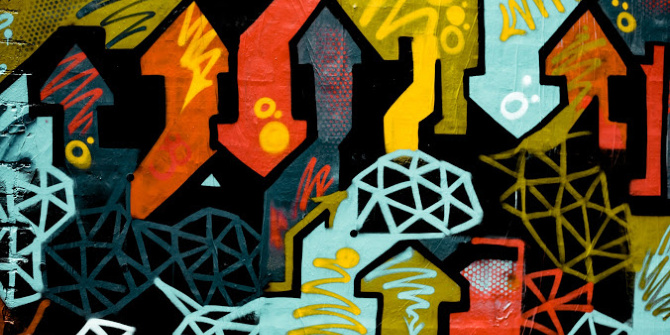In Connect the Dots: The Art and Science of Creating Good Luck, Christian Busch contests the notion of blind luck, arguing that adopting a “serendipity mindset” towards all social and professional interactions can increase the opportunity for serendipitous encounters. Using extensive primary research, Busch presents a lucid and engaging strategy for how to make your own luck, writes Robert J. Pidduck.
This blogpost originally appeared on LSE Review of Books. If you would like to contribute to the series, please contact the managing editor at lsereviewofbooks@lse.ac.uk. Readers can also listen to a podcast of an event featuring Christian Busch at LSE in 2022, Connect the Dots: the art and science of creating good luck.
Connect the Dots: The Art and Science of Creating Good Luck. Christian Busch. Penguin. 2022.
 The threads that make up life’s tapestry – its people, places, ideas – often seem to weave together by chance. But was it really sheer randomness behind your friend landing the job of her dreams from that peculiar interaction sitting next to the (then, unbeknownst to her) hiring manager on that vacation flight? Perhaps it is the same force providing your colleague with that miraculous new sales lead whether he’s stood in the queue at Starbucks, an ATM, or at the dentist. That entrepreneur you went to school with who’s always popping up on your social media feed; surely their uncanny knack for success over the years can be explained by a series of seemingly isolated yet fortunate accidents of “being in the right place at the right time”, no? Wrong.
The threads that make up life’s tapestry – its people, places, ideas – often seem to weave together by chance. But was it really sheer randomness behind your friend landing the job of her dreams from that peculiar interaction sitting next to the (then, unbeknownst to her) hiring manager on that vacation flight? Perhaps it is the same force providing your colleague with that miraculous new sales lead whether he’s stood in the queue at Starbucks, an ATM, or at the dentist. That entrepreneur you went to school with who’s always popping up on your social media feed; surely their uncanny knack for success over the years can be explained by a series of seemingly isolated yet fortunate accidents of “being in the right place at the right time”, no? Wrong.
Serendipity is not simply raw, unadulterated luck merely happening to us as bystanders; we can adopt a frame of mind that actively cultivates it around us.
Serendipity is not simply raw, unadulterated luck merely happening to us as bystanders; we can adopt a frame of mind that actively cultivates it around us. In Connect the Dots: The Art and Science of Creating Good Luck, Christian Busch elucidates the key types of serendipity, how it is comprised, why it tends to be misunderstood, and how we can craft a systematic approach to social interactions that helps “lucky accidents” to arise more habitually. A serendipity mindset, then, can enrich not only our own professional and personal lives with more eureka moments, but for those in our “serendipity fields,” too: from our friends, family, and business associates to that stranger at the bus stop or seemingly lost tourist.
Across ten lucid and research-grounded chapters, Busch presents a treasure trove of memorable stories and practical examples.
Across ten lucid and research-grounded chapters, Busch presents a treasure trove of memorable stories and practical examples: infamous tales from antiquity featuring King Solomon’s on-the-spot lateral thinking to solve pregnancy disputes, industry-begetting serendipity such as Flemming’s petri dish accident-turned-medical miracle, to how white goods giant Haier transformed the discovery of Chinese farmers’ potato-washing habits into a striking commercial pivot, among many other quotable gems. These fun anecdotes told in an engaging style hold readers’ attention and, more importantly, serve as an effective way to illustrate the book’s intellectually meatier concepts. The author skillfully manages to both educate the general reader and spark the curiosity of academic experts to immerse themselves in the footnotes. No easy feat.
Specifically, the “serendipity mindset” is grounded in the simple yet powerful idea that one can become attuned to a combination of “situational triggers” in conjunction with enacting a “set of dispositions”– alertness, openness to experience, and tenacity – that frame social interactions to stimulate serendipitous outcomes. This manifests as a personalised “serendipity field” that one can strengthen to bolster the chances that common social situations might yield serendipitous fruit, or create “smart luck”. Indeed, as Chapter 2 aphorises, “we underestimate the unexpected”. Becoming more attuned to and accepting of this can help us to shift towards framing ourselves as characteristically lucky. Thus, the fortunate accidents or miraculous encounters now happen to you, not just that friend, colleague, or omnipresent entrepreneur on LinkedIn.
A personalised ‘serendipity field’ […] to bolster the chances that common social situations might yield serendipitous fruit, or create ‘smart luck’.
The opening chapter introduces the three main ways serendipity manifests: the Archimedes (ie, known problems solved), Post-it Note (ie, stumble across a solution for an entirely different problem), and Thunderbolt (ie, solutions to unforeseen problems emerge without any intended search) forms of serendipity. The book goes on to suggest how we can, through focused efforts to adapt our socio-cognitive framing, become more routinely and behaviourally poised for embracing circumstantial uncertainty as par for the course in stimulating smart luck. Then, we learn why building the open-mindedness essential for both nurturing and capturing more eureka potentialities in daily life must be combined with a higher sense of purpose and the “Serendipitous Maxim” to Love Thy Neighbour. This aspect of the book is a noteworthy attribute that sets Connect the Dots apart from the many other psychology-based offerings in this business-themed, self-help genre. Busch manages to elegantly craft a scientific discussion of how we can enhance our lucky encounters in life, as “social alchemists” for creating positive energy, but in a genuine, considered way that contrasts with the hollow instrumentalism peddled by some other self-improvement books targeted at businesspeople or entrepreneurs.
Busch manages to elegantly craft a scientific discussion of how we can enhance our lucky encounters in life, as ‘social alchemists’.
The latter half of the book moves onto an insightful analysis of how the external elements of one’s serendipity field can be honed and developed for enduring success. This includes the effective and teachable concept of “setting serendipity bombs” – for example, identifying and reaching out to people in different fields or professions you admire yet have no connection with whatsoever. Do so with disarmingly honest yet thoughtful questions that will pique intrigue and prompt response (I have been putting this into practice, and the connections that result can be priceless.) Moreover, in varied formats, Busch recommends practicing the habit of planting diverse initiation “hooks” across three to five pre-prepared themes when introducing oneself or responding to common social niceties. Ditch the autopilot, “So, what do you do for a living?” at the next dinner party for, “So, what’s the big issue that’s eating up all your time recently?” which allows for a range of interpretations, followed perhaps by a cheeky “What do strangers at parties never ask you about your life that you wish they would?”. Turning this into a systematic approach increases the chances that such a question could result in that serendipitous personal best – meeting one’s future spouse via direct message, perhaps?
Consideration of how social norms or national cultural might enhance or diminish serendipity fields was [a] missed opportunity.
One minor critique of the book is that, despite the plausibility and accessibility of the theoretical arguments (I highly recommend it as required reading for all students interested in the psychology of entrepreneurship) much of the book’s research touches on aspects of serendipity fields in indirect ways. The “mindset” element itself remains a tad amorphous. From a psychometrician’s critical eye, there are references to so many distinct cognitive and behavioural constructs throughout the book that it can become hard to grasp how the efficacy of a serendipity mindset is intended to be established or compared. Some insight into best practices for how organisations or individuals could measure and track this would have added value. Moreover, consideration of how social norms or national cultural might enhance or diminish serendipity fields was another missed opportunity. However, in light of the powerfully positive message and global attention Busch has sparked with the core ideas in this book, there is little doubt such questions will be explored imminently – not through blind luck, of course, but through meaningful serendipitous connections.
The content generated on this blog is for information purposes only. This Article gives the views and opinions of the authors and does not reflect the views and opinions of the Impact of Social Science blog (the blog), nor of the London School of Economics and Political Science. Please review our comments policy if you have any concerns on posting a comment below.
Image Credit: Riho Kroll via Unsplash.







